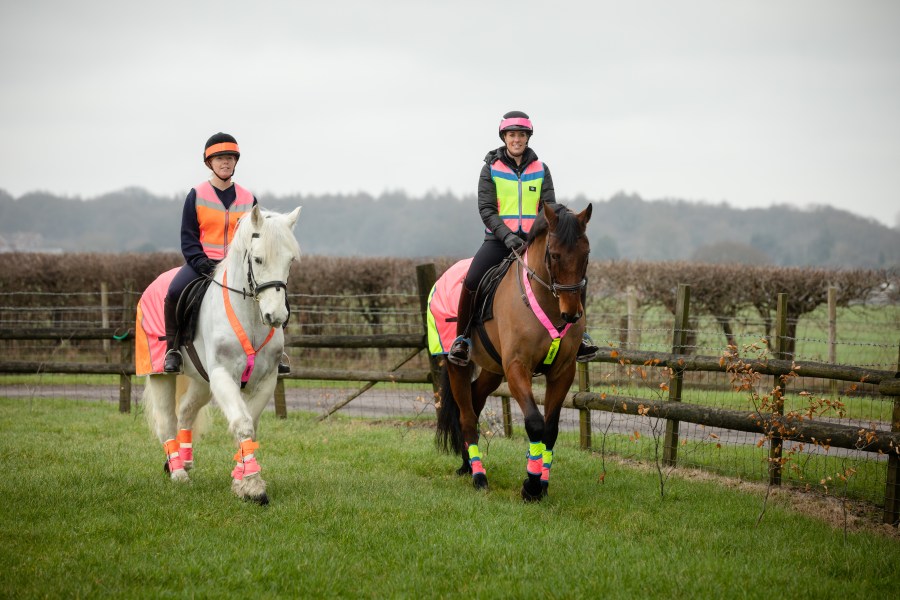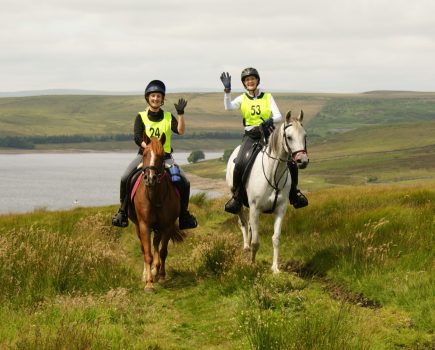In partnership with Equisafety
Having a positive mindset is key when it comes to riding our horses. Our thoughts control everything we do, so if we’re having negative ones, this can drastically impact how we look at our horse, our riding and our confidence – particularly when hacking out.
“In a lot of ways, hacking is much harder than other disciplines in terms of what is in our control, but often riders think of it as the least they should be able to do,” says performance and mindset coach Sian Phipps.
It’s all too easy to let our thoughts run away from us, particularly if we’ve had a bad experience or our confidence has been knocked. You might feel out of control as your negative thoughts spiral and you are constantly battling ‘what ifs’. But there’s a reason why your brain does this, and it’s actually trying to protect you.
“Our brains are negatively biased,” says Sian. “It’s not that you aren’t a brave or confident rider, but it’s that your brain is programmed to keep you safe, especially if you are going into a situation that has resulted in a bad experience or fall previously.
“When you’ve had a scary experience, it is stored in your head as a trauma, so your brain will be on high alert to look for anything that indicates it could happen again. It gives you those negative thoughts in order to try and keep you in your comfort zone – it’s trying to keep you safe.”
Even if there was nothing you could do differently, or if it was just a freak accident, your brain doesn’t process this nuance, which can be frustrating.
Re-writing the story
Our thoughts feed into our feelings and actions, which is why negative self-talk or constantly letting our minds focus on negative outcomes can make us feel anxious and tense, which can in turn impact our riding, and this can start a vicious cycle.
“It’s important that we’re aware of the ‘background noise’ or the little voice in our head, as these will impact how we feel about a ride,” says Sian. “Everyone has what I like to call ‘internal Netflix’, which are the stories in your head – these could be bad experiences or things that have gone wrong in the past.
“If you have a negative episode of your internal Netflix playing in your head at the same time as hacking, it will impact how you feel and the actions you take. Instead of letting this run through your mind, take some time to re-write the episode.”
If you have a particular scenario you play through your mind, think about what happened and what you could do to change the story. Sian recommends trying this exercise if the idea of a past scenario repeating itself is worrying you:
- Start by looking back over what happened.
- What did you do? How did you react to the situation?
- Ask yourself honestly, with the experience and skills you had at that time, if you could have done anything differently. Often we are overly harsh with ourselves in hindsight. For example, if your horse spooked and spun around quickly, and you fell off, could you have stayed on when you didn’t see it coming?
- If you think you could have done something differently, break down exactly what that would be, or think about what you would do should it happen again.
- If there are things that are out of your control, acknowledge them but don’t focus on them – unfortunately, there are so many variables out hacking that we can’t control them all, but we can control how we react.
- Think about everything you can control – for example, the safety wear you put on, your horse, the route that you ride, and how you respond to the things that are outside of your control.
Re-framing to the neutral
To have a positive mindset, you might think you need to think positively or confidently, but that’s not the case. Instead, you need to think neutrally.
“Rather than jump to positive, you want to move from negative thoughts to neutral ones by re-framing how you look at things,” says Sian. “For instance, if you have a spooky horse, the negative thought would be ‘my horse will spook’ and the positive would be ‘my horse won’t spook’ but instead you want to think neutrally: ‘even if my horse spooks, I’ve got the skills and tools to be able to ride through that’. So you’re not getting rid of the problem, you’re telling your brain that you can handle it.”
Once you’ve gotten into the habit of re-framing things to the neutral, it’s time to take it one step further.
“In terms of a positive mindset, rather than think ‘my horse won’t do this’, think of problems in terms of ‘how can I help my horse do this?’ or ‘how can I help us to be more confident?’,” says Sian. “Once you’ve done that you can break it down into stages and look at each step you’ll need to take.”
Sian says it doesn’t matter how big a step it is, as long as you’re moving forward in a positive way. This will look different for every rider, so don’t feel pressure to push yourself too quickly too soon. It could be as simple as sitting in the saddle for a minute before getting off and leading your horse for a hack in hand or riding down the driveway and back. Aim for 1% better each time, and it’ll quickly add up, even if it doesn’t feel that way.
“Don’t fall into the trap of telling yourself you should be be able to do something because others can, or because you could do it before,” adds Sian. “You don’t have to feel brave all the time – just start with 30 seconds.”
Meet the expert: Sian Phipps BSc (Hons) is a UKCC performance and mindset coach, NLP master practitioner, master hypnotherapist and timeline therapist based in Staffordshire. She offers physical and online sessions. To find out more, visit her Facebook page.
This content is brought to you in partnership with Equisafety, high viz clothing for horses and riders.
Check out our subscription offer








